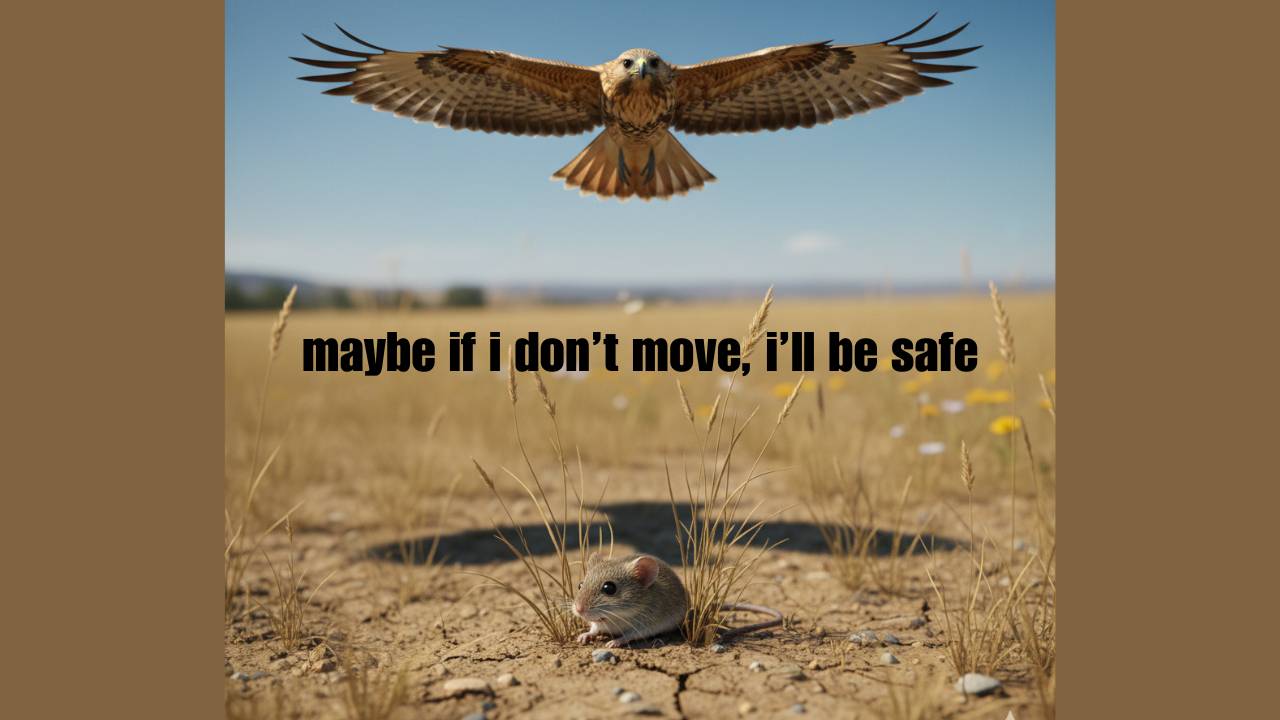
Beyond Survival: The Neuroscience of Thriving & Why You're Not Broken
Apr 28, 2025
You're Not Broken, Just Trapped: The Key to Unlocking Your True Aliveness.
Have you ever felt like you’re constantly running on empty, overwhelmed by stress, or stuck in a cycle of negative emotions? 😔 You’re not alone, and more importantly, you are not broken. Our bodies and minds are incredibly resilient, designed not just to survive, but to thrive. Let’s dive into the neuroscience behind this and explore how you can shift from simply getting by to truly living.
Understanding Survival Mode ⚠️
Imagine your nervous system has two main settings: survival mode and thriving mode. Survival mode is like an alarm system that kicks in when it perceives a threat, whether it's a real danger or something your brain interprets as stressful. Think of it like a car stuck in first gear, engine revving high but not moving forward smoothly, or a deer caught in headlights, frozen and unable to act effectively. Visually, you might picture a tangled knot of tension in the body or a mind racing with worries.
When in survival mode, your body activates the fight, flight, or freeze response. This can manifest as anger, frustration, anxiety, worry, depression, numbness, or feeling shut down. This system, while crucial for immediate danger, can get stuck in the "on" position due to everyday stressors or past experiences. Any time we feel overwhelmed, angry, afraid, anxious, worried, hopeless, or depressed, we are activating this survival part of our brain. This is often a biological overreaction to non-literal threats. Like when we feel overwhelmed about doing the dishes, pound the steering wheel in anger about being stuck in traffic, or yell at our kids to hurry out the door.
The Far-Reaching Impact of Survival Mode 🤕
Living in survival mode takes a significant toll on every aspect of your being.
-
Emotions: You might find yourself constantly battling negative emotions like anger, anxiety, or sadness. Or it may be more subtle and less overtly negative, but you just don't feel vivacious or passionate. This can create a loop where your thoughts fuel your feelings and vice versa, leading to intense emotional experiences. You might even become "addicted" to these familiar emotional states, as your brain chemistry adjusts to them as a "new normal," and changing feels like "dying" to this part of our brain.
- Relationships: Reacting from a place of fear or anger can strain your connections with others. The survival brain interprets the world through a lens of danger, potentially seeing loved ones as competitors or predators. In this reactive state, you are running on "autopilot," repeating old patterns instead of responding consciously, creatively, and skillfully in our most important relationships with loved ones and colleagues.

Take the 30-Day Reset From Surviving to Thriving
I hope you're enjoying this free blog. If you want to take these concepts to action, you can explore more with this 30-day online course. In about 10-minutes a day, you can reset and refresh. In this course, you will get a new module delivered to your inbox daily for 30 days. The work works if you work it. Real talk, real tools, real results. Together we thrive.
- Health: Chronic activation of the survival mode diverts energy away from crucial functions like the immune system and normal growth processes. This can contribute to various health problems, as the body experiences wear and tear from the constant state of alert. Most of us have heard by now that a large percentage of doctor's visits are attributed to illnesses originating with "stress," a key indicator of survival mode activation. Higher thinking and problem-solving abilities are also impaired in this state, and so our problems are more likely compounded by our emotionally driven, rash reactions.
Embracing Thriving Mode 🌱
The good news is that your nervous system also has a thriving mode. This is a state where you experience flow, fortitude, and freedom. In thriving mode, you have access to creativity, rationality, and a sense of connection. It’s the part of our nervous system where healing, health, happiness, love, safety, and joy naturally occur. Think of a calm, clear stream flowing effortlessly or a plant growing strong and vibrant in good conditions.
Shifting into thriving mode allows your body's innate healing mechanisms to work optimally. When you are in this state, information is stored in the hippocampus in a chronological order, allowing for conscious recall without the intense emotional charge associated with survival-based memories stored in the amygdala. By spending more time in the parasympathetic nervous system (PNS) – the foundation of thriving mode – you naturally feel better and better, and healing happens as a natural byproduct. Most people think we need to heal in order to thrive, but we need to thrive in order to heal.
Simple Steps to Shift Towards Thriving ✨
- Become Aware of Your State: Start noticing when you feel those familiar signs of survival mode – the tension, the racing thoughts, the negative emotions. Ask yourself: "Am I feeling fight (anger, frustration), flight (fear, anxiety), or freeze (numbness, shutdown)?. Then ask, "Is this is a real and present threat to my life, or a problem I would be better able to solve from thriving mode?" Recognizing these states is the first step to making a change. Then, make a deliberate choice to shift your state.
- Harness the Power of Breath: Your breath is a direct link to your nervous system. Practice a 1:2 inhale-to-exhale ratio, where your exhale is at least twice as long as your inhale. This stimulates the parasympathetic nervous system, promoting calm and relaxation. You can also try a physiological sigh – two short inhales through the nose followed by a long exhale through the mouth – to quickly reduce stress.
- Consider Tapping (EFT): Emotional Freedom Techniques (EFT) or tapping involves gently tapping on specific acupressure points on your body while focusing on a thought or feeling and stating an affirmation for the future you desire. This can help to clear blockages in your nervous system and move traumatic memories from the amygdala to the hippocampus, fostering a sense of safety and allowing your natural healing to occur.
Ready to Thrive? 🚀
Shifting from survival to thriving is a journey of conscious effort and self-compassion. By understanding the neuroscience of your nervous system and incorporating simple practices, you can unlock your innate capacity for healing, joy, and a more fulfilling life.
Want to learn more about how to consistently access thriving mode and create a life beyond survival? Join our JEM-gym community for mental fitness and optimal performance in challenging times for more in-depth lessons, practical tools, and a supportive environment to guide you on your path. You deserve to thrive! 😊











